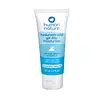What's inside
What's inside
 Key Ingredients
Key Ingredients

No key ingredients
 Benefits
Benefits

No benefits
 Concerns
Concerns

 Ingredients Side-by-side
Ingredients Side-by-side

Water
Skin ConditioningPropanediol
SolventBetaine
HumectantGlycerin
HumectantStearyl Alcohol
EmollientAloe Barbadensis Leaf Juice
Skin ConditioningGlycine Soja Oil
EmollientDicaprylyl Ether
EmollientHydrolyzed Hyaluronic Acid
HumectantBeta Vulgaris Root Extract
Skin ConditioningHydrolyzed Corn Starch
HumectantTapioca Starch
Xanthan Gum
EmulsifyingSclerotium Gum
Emulsion StabilisingCapryloyl Glycerin/Sebacic Acid Copolymer
Skin ConditioningDiheptyl Succinate
EmollientTocopherol
AntioxidantGlyceryl Caprylate
EmollientCetearyl Alcohol
EmollientCetyl Alcohol
EmollientMyristyl Alcohol
EmollientArachidyl Alcohol
EmollientGlyceryl Stearate Citrate
EmollientCitric Acid
BufferingSodium Citrate
BufferingGluconolactone
Skin ConditioningCalcium Gluconate
HumectantParfum
MaskingSodium Benzoate
MaskingPotassium Sorbate
PreservativeWater, Propanediol, Betaine, Glycerin, Stearyl Alcohol, Aloe Barbadensis Leaf Juice, Glycine Soja Oil, Dicaprylyl Ether, Hydrolyzed Hyaluronic Acid, Beta Vulgaris Root Extract, Hydrolyzed Corn Starch, Tapioca Starch, Xanthan Gum, Sclerotium Gum, Capryloyl Glycerin/Sebacic Acid Copolymer, Diheptyl Succinate, Tocopherol, Glyceryl Caprylate, Cetearyl Alcohol, Cetyl Alcohol, Myristyl Alcohol, Arachidyl Alcohol, Glyceryl Stearate Citrate, Citric Acid, Sodium Citrate, Gluconolactone, Calcium Gluconate, Parfum, Sodium Benzoate, Potassium Sorbate
 Reviews
Reviews

Ingredients Explained
These ingredients are found in both products.
Ingredients higher up in an ingredient list are typically present in a larger amount.
Cetearyl alcohol is a mixture of two fatty alcohols: cetyl alcohol and stearyl alcohol. It is mainly used as an emulsifier. Emulsifiers help prevent the separation of oils and products. Due to its composition, it can also be used to thicken a product or help create foam.
Cetearyl alcohol is an emollient. Emollients help soothe and hydrate the skin by trapping moisture.
Studies show Cetearyl alcohol is non-toxic and non-irritating. The FDA allows products labeled "alcohol-free" to have fatty alcohols.
This ingredient is usually derived from plant oils such as palm, vegetable, or coconut oils. There is debate on whether this ingredient will cause acne.
Due to the fatty acid base, this ingredient may not be Malassezia folliculitis safe.
Learn more about Cetearyl AlcoholCitric Acid is an alpha hydroxy acid (AHA) naturally found in citrus fruits like oranges, lemons, and limes.
Like other AHAs, citric acid can exfoliate skin by breaking down the bonds that hold dead skin cells together. This helps reveal smoother and brighter skin underneath.
However, this exfoliating effect only happens at high concentrations (20%) which can be hard to find in cosmetic products.
Due to this, citric acid is usually included in small amounts as a pH adjuster. This helps keep products slightly more acidic and compatible with skin's natural pH.
In skincare formulas, citric acid can:
While it can provide some skin benefits, research shows lactic acid and glycolic acid are generally more effective and less irritating exfoliants.
Most citric acid used in skincare today is made by fermenting sugars (usually from molasses). This synthetic version is identical to the natural citrus form but easier to stabilize and use in formulations.
Read more about some other popular AHA's here:
Learn more about Citric AcidParfum is a catch-all term for an ingredient or more that is used to give a scent to products.
Also called "fragrance", this ingredient can be a blend of hundreds of chemicals or plant oils. This means every product with "fragrance" or "parfum" in the ingredients list is a different mixture.
For instance, Habanolide is a proprietary trade name for a specific aroma chemical. When used as a fragrance ingredient in cosmetics, most aroma chemicals fall under the broad labeling category of “FRAGRANCE” or “PARFUM” according to EU and US regulations.
The term 'parfum' or 'fragrance' is not regulated in many countries. In many cases, it is up to the brand to define this term.
For instance, many brands choose to label themselves as "fragrance-free" because they are not using synthetic fragrances. However, their products may still contain ingredients such as essential oils that are considered a fragrance by INCI standards.
One example is Calendula flower extract. Calendula is an essential oil that still imparts a scent or 'fragrance'.
Depending on the blend, the ingredients in the mixture can cause allergies and sensitivities on the skin. Some ingredients that are known EU allergens include linalool and citronellol.
Parfum can also be used to mask or cover an unpleasant scent.
The bottom line is: not all fragrances/parfum/ingredients are created equally. If you are worried about fragrances, we recommend taking a closer look at an ingredient. And of course, we always recommend speaking with a professional.
Learn more about ParfumWater. It's the most common cosmetic ingredient of all. You'll usually see it at the top of ingredient lists, meaning that it makes up the largest part of the product.
So why is it so popular? Water most often acts as a solvent - this means that it helps dissolve other ingredients into the formulation.
You'll also recognize water as that liquid we all need to stay alive. If you see this, drink a glass of water. Stay hydrated!
Learn more about Water